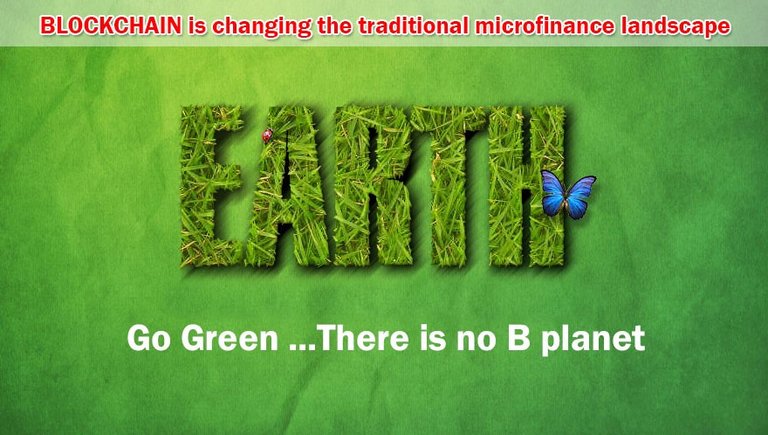 The 2015 Paris Climate agreement between global leaders marked a change to the global sustainability agenda — agreement between all the key economies on what we need to do to reverse the damage that anthropogenic global warming is doing to our planet. In September 2015, the 17 Sustainable Development Goals (SDGs) for 2030 were identified.
The 2015 Paris Climate agreement between global leaders marked a change to the global sustainability agenda — agreement between all the key economies on what we need to do to reverse the damage that anthropogenic global warming is doing to our planet. In September 2015, the 17 Sustainable Development Goals (SDGs) for 2030 were identified.
During the One Planet Summit in 2017, UN Secretary — General Antonio Guterres said: “Finance is the key to successful climate action”. Finance sector plays an utmost essential part in preserving the environment and achieving UN goals of sustainable Planet.
Much of the sustainability agenda requires injections of cash from investors, donors or governments, to progress. While there has been significant investment globally and this has led to a lot of sustainability projects being built, as well as the “greening” of existing industries, the success of initiatives varies between different geographies and industries. In many cases, it is challenging to get green projects initiated because of currency volatility, lack of transparency, or lack of clarity about investments, while in many countries, the risk of corruption deters investors.
By increasing investor or donor confidence in allocating money to countries or industries where transparency and corruption have been concerns, these top-down solutions can expand the scope of overseas investment and aid significantly, while reducing corruption and administration costs.
Aid for disaster relief and longer-term development programmes attracts significant investment from governments, businesses and private individuals, but faces a huge logistical and reputational challenge. Typical aid donation scenarios involve a donation in one currency, which is converted to a second currency by the global NGO distributing the aid, then another currency in-country and possibly further conversions as global distributors are used to support the emergency.
Aid is also traditionally subject to significant “leakage”, with funds and goods diverted to corrupt officials or, commonly, local people taking advantage and selling goods on the open market. Donations to aid funds typically lose around 30% to multiple FX and transaction charges and poor terms from banks, while administration is high and as it is very hard to trace funds there are corruption and fraud opportunities.
Blockchain technology offers an opportunity to add transparency and confidence to donation pipelines, by creating an end to end audit trail of each transaction together with non-traditional identification techniques to ensure the correct recipients are benefitting, even if they lack formal identity or bank accounts. The combination of blockchain technology with layered business logic, further ensures that confirmation, payments and other events can be tied to firm evidence that desired objectives have been achieved, as well as offering the opportunity to solicit additional evidence and assurance where required.
Many countries that have the climate for growing vegetables and fruit are importing large quantities, because the economics of rural farming don’t attract sufficient numbers of producers; this in turn leads to higher costs of produce which in turn, impacts the urban poor.
Given the high level of imports and the cost of fruit and vegetables, targeting urban greening and fruit/vegetable production in urban areas benefits urban communities by reducing food costs and carbon footprints.
The solution includes sending waste to biomass energy sources, with internal cost allocation via the cryptocurrency. Large producers such as vertical farms sell their produce directly over the platform to small and large consumers, including commercial or domestic cold storage units, distributed via traditional or automated distribution networks (or simply picked up at the source). Small producers such as households create self-executing contracts over the system, which can be bidded for by consumers including automated cold storage facilities, without the need for intervention. Prosumers can therefore transact directly with each other and with commercial consumers, forming a core part of the food distribution circle, and reducing the need for intermediaries and associated overhead costs.
Key points:
Financial technology solutions, and particularly those based on blockchain, can help to accelerate the implementation of the UN’s Sustainability Development Goals
Top-down solutions include creative approaches to investment, including alternative approaches to investment products, crowdfunding platforms and aid pipeline management
Bottom-up solutions include community based platforms, circular economy and solutions that leapfrog traditional financial services
The technology is evolving, but there are existing precedents such as M-Pesa that demonstrate the impact that alternative financial solutions can have in supporting sustainability in developing economies
Sustainability challenges apply to developed as well as developing economies, and they can all benefit from these solutions
By Subashini Samaranayake
Please give me a follow and I will give you a follow in return!
Please also take a moment to read this post regarding bad behavior on Steemit.✅ @prosperouscapi, I gave you an upvote on your first post!